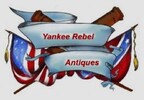 Loading... Please wait...
Loading... Please wait...-
Call us on (973) 810-2976
- My Account
- Gift Certificates
- Items / $0.00
All prices are in All prices are in USD
Categories
- Home
- Sold, Hold, Layaway items
- RARE - Revolutionary War Cannonball, recovered many years ago at Boston, MA (SOLD)
RARE - Revolutionary War Cannonball, recovered many years ago at Boston, MA (SOLD)
Out of Stock
Product Description
This is another nice early piece coming out of a 60-year collection of French & Indian War, Revolutionary War, and War of 1812 artillery. Being offered is a Revolutionary War 9-pounder solid-shot, probably British. It has a diameter of 4" inches and weighs 8 pounds, 4 ounces with a sprue hole. During the Revolution both sides made extensive use of artillery along with many 9-pounder cannons (see pictures). This rare cannonball was recovered many years ago at Boston, Massachusetts.
The Siege of Boston was the eleven-month period from 19 April 1775 to 17 March 1776 when American militiamen effectively contained British troops within Boston, and after the Battle of Bunker Hill, to the peninsula of Charlestown. The American, or Provincial, armed forces, were initially called the New England Army (formed from the militiamen who answered the alarm on 19 April 1775) and then became part of the Continental Army when it was established in June 1775.
During the Siege many residents moved out of Boston, and some Loyalists from the surrounding countryside moved into town. Conditions within the town were harsh for all who remained; although the British maintained control of Boston Harbor, provisions dwindled while they waited for supply ships to arrive.
The Siege continued until George Washington, commander of the Continental Army, seized and fortified Dorchester Heights (see pictures), just outside Boston, on the night of March 4th, 1776. Using artillery captured by an expedition led by Henry Knox from Fort Ticonderoga and Crown Point, Washington's forces aimed cannons at British ships anchored in the harbor. On March 17th, the British were finally forced to evacuate Boston.
Boston recovered cannonballs, or just about any artifacts, are rare and desirable because that area is so built up now. Out of this very large collection there were only a few pieces coming out of Boston.
The ball remains in very nice condition, having some overall roughness, but no chipping or flaking. This collection began in the late 1950s and was created by private acquisitions, closed museums, and from lake divers. The collector meticulously displayed and cataloged every piece along with its provenance. His markings were crude at the time, but now they have proved to be very important. Many of the pieces went through electrolysis to remove crusted rust.
This is the first time this cannonball has been on the open market, and it is truly a great piece of early American History. It definitely merits a place in an advanced collection or museum. As with all the pieces in this esteemed collection, a Certificate of Authenticity will be included. It comes in the acrylic display case pictured. As with all items on the website, the very friendly layaway is available.



